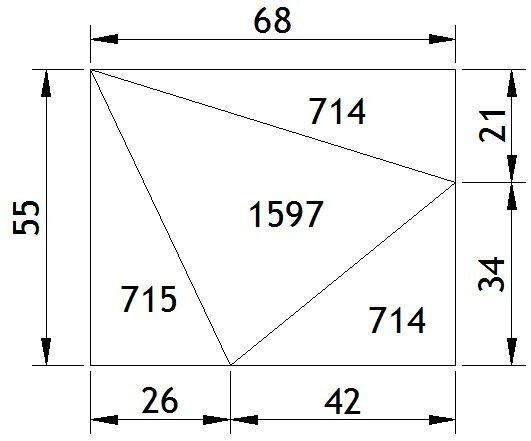The probability of the centre of the circle being within the pentagon is 11/16.
The general formula for an n-sided shape is: 1 - n/(2^(n-1))
If you're interested, the derivation of the above formula is as follows:
The puzzle asked, for five points positioned at random, what is the probability of the pentagon formed by them containing the centre of the circle.
Let’s switch is round and ask what the probability is of missing the centre. For this to be the case, all of the points must be in the same half of the circle, but that half could be 0 to 180 degrees, or 180 to 360, or 63 to 243, or any of the countless other ways. So let us pick a point, one of the five random points, and (temporarily) call that our zero, our datum. What is the chance of the other 4 points being less than 180 degrees clockwise from the datum? Simply ½ x ½ x ½ x ½, or 1/16.
Each of the five points can be taken as the datum in turn. So is it just a matter of adding together those five probabilities (or, as they are equal, simply multiplying 1/16 by 5)? Well yes, since at most one datum can result in all the other points being less than 180 clockwise from that point, the five cases are mutually exclusive, and it is indeed just a matter of adding them together.
From here it is easy to see what the general equation is. For n points, the probability of not containing the centre is:
n/(2^(n-1))
Giving the sequence ¾, 4/8, 5/16, 6/32, 7/64, 8/128 etc (before simplification, to demonstrate that the numerator increases by one and the denominator doubles with each new term)
Then the probability of containing the centre is merely the complement of this, or 1 – n/(2^(n-1))
Resulting in the sequence ¼, ½, 11/16, 13/16, 57/64, 15/16 etc.










